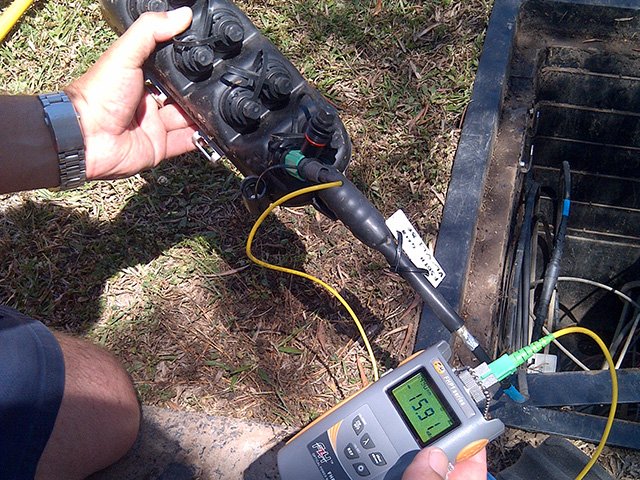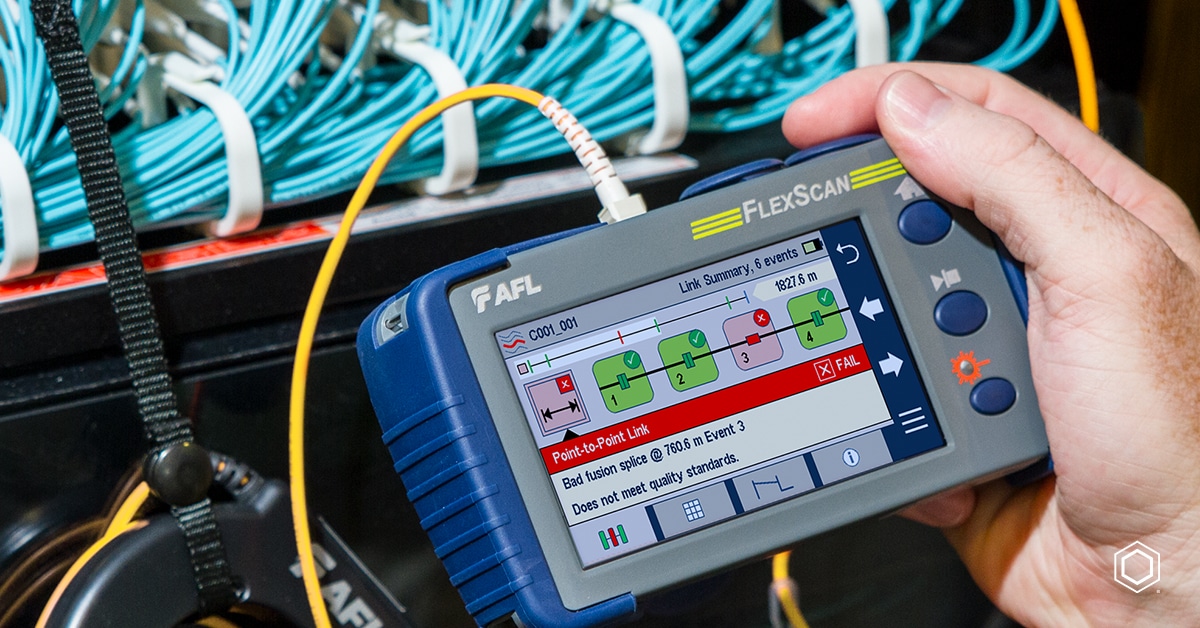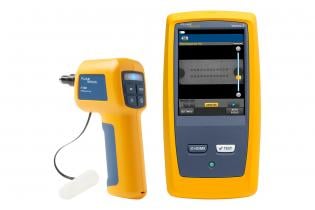Professionals use optical fibre testing equipment to maintain high-speed data transmission.
Professionals use optical fibre testing equipment to maintain high-speed data transmission.
Blog Article
Unveiling the Trick Use Optical Fibre Evaluating for Efficient Information Transmission
In the realm of modern communication, optical fiber testing becomes an essential practice for maximizing information transmission. By employing methods such as Optical Time Domain Name Reflectometry (OTDR) and insertion loss assessments, network drivers can effectively pinpoint and address problems that may compromise signal stability. As the need for faster and a lot more trustworthy links proceeds to climb, the implications of these testing methods prolong beyond prompt fault detection, affecting lasting network performance. Understanding the complex applications of optical fiber screening welcomes a deeper exploration right into its pivotal function in forming the future of data interaction.

Significance of Optical Fiber Screening
The significance of optical fibre screening can not be overemphasized, as it works as a vital component in making sure the dependability and efficiency of data transmission systems. In an age where high-speed interaction is critical, any kind of deficiencies in fibre optics can lead to significant data loss and lowered performance. As a result, extensive screening protocols are vital to validate the integrity and efficiency of optical cords.
Evaluating enables the recognition of flaws such as micro-bends, macrobends, and splice losses that could hinder signal high quality. Furthermore, it gives understandings right into the total depletion and bandwidth abilities of the fibre, guaranteeing that the network fulfills details functional criteria. Normal screening not only boosts system performance yet also prolongs the lifespan of the framework by recognizing potential problems prior to they rise right into pricey failings.

Kinds Of Optical Fiber Tests
Various types of optical fibre examinations are conducted to ensure the efficiency and dependability of fibre optic networks. These tests can be classified right into a number of essential kinds, each offering a particular objective in evaluating the honesty of the fiber.
First, Optical Time Domain Reflectometry (OTDR) is a famous test that identifies mistakes, mates, and connectors within the fiber. By sending out pulses of light and analyzing the reflected signals, technicians can identify concerns along the fibre's size.
2nd, insertion loss examinations review the quantity of signal loss when light passes with connectors or splices, which is important for maintaining network effectiveness.
Third, return loss examinations measure the quantity of light mirrored back in the direction of the source, offering insights into the high quality of links and possible resources of interference.
Additionally, connection examinations guarantee that the fiber path is full, allowing technicians to confirm that the fiber is undamaged without any breaks. fibre testing equipment.
Lastly, aesthetic fault locators make use of Homepage noticeable light to recognize breaks or severe bends in the fiber, assisting in quick troubleshooting. Collectively, these examinations develop a comprehensive approach to maintaining ideal performance in fibre optic networks.

Applications in Network Maintenance
In contemporary telecoms, reliable network maintenance depends heavily on optical fiber screening to recognize and rectify issues quickly. Regular testing makes certain that the network operates at optimal performance levels, reducing downtime and boosting user experience.
Among the main applications of optical fibre testing in maintenance is the discovery of faults, such as breaks, flexes, or improper connections. Strategies like Optical Time Domain Reflectometry (OTDR) allow service technicians to locate these issues properly and evaluate the high quality of the fiber web link. Furthermore, loss screening confirms the honesty of the optical path, guaranteeing that signal attenuation continues to be within appropriate limits.
Routine maintenance testing likewise aids in preventative procedures, recognizing prospective troubles before they rise into considerable failings. This proactive technique can save companies both time and funds. Throughout upgrades or developments, optical fiber testing makes sure that new installments incorporate perfectly with existing infrastructure.
Enhancing Data Transmission Integrity
Efficient network maintenance through optical fiber screening not just addresses instant concerns yet also plays a significant duty in improving information transmission reliability. By recognizing faults, measuring signal loss, and assessing the overall condition of fibre optic wires, screening makes certain that possible troubles are rectified before they rise into substantial disruptions.
Routine optical fibre testing, such as time-domain reflectometry (TDR) and optical time-domain reflectometry (OTDR), enables specialists to determine the precise locations of breaks, bends, or adapter concerns within the network. This proactive method not just lessens downtime however additionally enhances the efficiency of information transmission by ensuring that the pathways for signals are clear and operating efficiently.
Moreover, testing aids in validating adherence to sector a fantastic read requirements and specs, which is crucial for maintaining the honesty of information flow. By making certain that each link fulfills required thresholds for loss and quality, companies can reinforce their self-confidence in the integrity of their information networks.
Ultimately, investing in detailed optical fiber testing not just boosts information transmission integrity but additionally supports the lasting operational efficiency of communication facilities.
Future Patterns in Fiber Screening
Emerging technologies Click This Link are poised to revolutionize fiber screening, leading the way for improved performance and accuracy in data transmission diagnostics (robotic vision). As the need for faster net and greater data transfer remains to rise, the integration of sophisticated tools such as artificial intelligence (AI) and artificial intelligence (ML) is set to change typical fiber screening approaches. These technologies will allow anticipating maintenance and automated mistake discovery, substantially lowering downtime and enhancing network integrity
In addition, the fostering of Web of Points (IoT) tools will certainly assist in real-time monitoring of fiber networks, enabling immediate recognition of efficiency problems. This shift towards aggressive administration will lessen disruptions and maximize information circulation.
In addition, technologies in optical time-domain reflectometry (OTDR) and new testing standards will certainly enhance the precision of dimensions, ensuring that information honesty is kept throughout the transmission procedure. The arrival of 5G innovation likewise requires the advancement of extra sophisticated fibre screening methods to support its high-speed demands.
Final Thought
Finally, optical fiber testing is crucial for keeping effective data transmission within communication networks. By employing various testing methods, such as OTDR and insertion loss examinations, potential faults can be identified and fixed, thus enhancing signal quality and minimizing downtime. Regular screening not just ensures conformity with market criteria however also assists in aggressive upkeep, inevitably adding to the lasting dependability and efficiency of fiber optic systems. The continued advancement of screening approaches will certainly additionally boost these capacities in the future.
Report this page